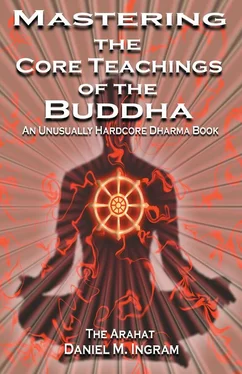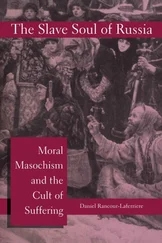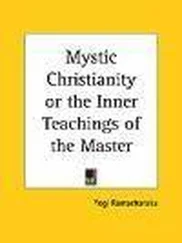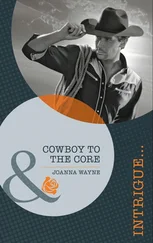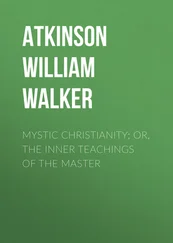Daniel Ingram - Mastering the Core Teachings of Buddha - An Unusually Hardcore Dharma Book
Здесь есть возможность читать онлайн «Daniel Ingram - Mastering the Core Teachings of Buddha - An Unusually Hardcore Dharma Book» весь текст электронной книги совершенно бесплатно (целиком полную версию без сокращений). В некоторых случаях можно слушать аудио, скачать через торрент в формате fb2 и присутствует краткое содержание. Год выпуска: 2009, ISBN: 2009, Издательство: Aeon Books, Жанр: Старинная литература, на русском языке. Описание произведения, (предисловие) а так же отзывы посетителей доступны на портале библиотеки ЛибКат.
- Название:Mastering the Core Teachings of Buddha - An Unusually Hardcore Dharma Book
- Автор:
- Издательство:Aeon Books
- Жанр:
- Год:2009
- ISBN:9781904658405
- Рейтинг книги:5 / 5. Голосов: 1
-
Избранное:Добавить в избранное
- Отзывы:
-
Ваша оценка:
- 100
- 1
- 2
- 3
- 4
- 5
Mastering the Core Teachings of Buddha - An Unusually Hardcore Dharma Book: краткое содержание, описание и аннотация
Предлагаем к чтению аннотацию, описание, краткое содержание или предисловие (зависит от того, что написал сам автор книги «Mastering the Core Teachings of Buddha - An Unusually Hardcore Dharma Book»). Если вы не нашли необходимую информацию о книге — напишите в комментариях, мы постараемся отыскать её.
Mastering the Core Teachings of Buddha - An Unusually Hardcore Dharma Book — читать онлайн бесплатно полную книгу (весь текст) целиком
Ниже представлен текст книги, разбитый по страницам. Система сохранения места последней прочитанной страницы, позволяет с удобством читать онлайн бесплатно книгу «Mastering the Core Teachings of Buddha - An Unusually Hardcore Dharma Book», без необходимости каждый раз заново искать на чём Вы остановились. Поставьте закладку, и сможете в любой момент перейти на страницу, на которой закончили чтение.
Интервал:
Закладка:
And yet, their maps of enlightenment still contain a hefty helping of scary market-driven propaganda and so much garbage that is life-denying, dangerously out of touch with what happens, and an
impediment to practice for millions of people. That the enlightened lineage holders of the modern Theravada and their ex-monk Western counterparts don’t have the balls to stand up and say, “We are deeply sorry that for 2,500 years our predecessors perpetuated this craziness to put food in their bowls and fool ignorant peasants so that they might be supported in their other useful work, and we vow to do better!” is a crying shame.
They are chained to the texts, myths and the ancient lies, seemingly doomed to indoctrinate and brainwash generation after generation of monks, practitioners and devoted followers with their delicious poison.
What a freakish paradox that the meditative techniques and
technologies that I consider among the most powerful and direct ever created should come from a tradition whose models of awakening contain some of the worst bullshit of them all. I have sat with numerous arahats who were monks or former monks who just couldn’t seem to 277
Models of the Stages of Enlightenment
overcome their indoctrination and so when giving dharma talks would habitually mix in the crap with the gold when it was obvious they knew better.
I have at times dreamed that all the teachers from all the lineages would get together in secret, come up with a plan to jointly get themselves out of the trap, and in a big formal ceremony present the truth as a new beginning, like a mass intervention, like a family gathering around an alcoholic to try to force them to reform their ways. None of them on their own seem to be fully able to take the heat, as each one that steps out of line in a direct fashion tends to get blasted, though there are exceptions, such as Jack Kornfield’s After the Ecstasy, the Laundry. Thus, I think they should all try to do it together, with Zen Masters, Lamas, Rinpoches, Tulkus, Sayadaws, Achaans, and their Western counterparts all standing side by side saying, “Enough is enough! We are declaring a new era of honest, open, realistic dharma teaching, free from sectarian fighting, free from preposterous models of awakening, and free from denial of humanity!” Enough of my ranting, back to the models…
I have no major beef with their description of stream entry. It does make people realize somewhat that rites and rituals are not the primary reason that they got enlightened, though I know of a number of practitioners that got enlightened with the help of techniques that were very ritualistic and continue to include rituals of various sorts in their practice, and why not. Stream entry does counter in some semi-intellectual way the sense that there is a permanent, separate self, though exactly how they know this is much more vague and mysterious to them than at the higher stages of awakening, though it beats the pants of any understanding of this that is pre-stream entry.
Further, they know that awakening is possible and can be done in this lifetime, assuming they know they are awakened in the first place, which strangely not all enlightened beings do. Those persons that encounter these understanding outside of established traditions may fail to recognize that what they have understood is called awakening and other names. Regardless, stream entry is known as the opening of the Dharma Eye, as contrasted with the Wisdom Eye of arahatship. These 278
Models of the Stages of Enlightenment are simply poetic metaphors for some aspects of clearly perceiving things.
My real problem with the Theravada Four Path Model comes as
soon as it starts talking about second path, i.e. the attenuation of greed and hatred or attraction and aversion, and by the time it promises eliminating these in their ordinary forms as they say occurs in third path, I think that serious critique of their language and dogma is called for.
What they are attempting to say is that the sense of the observer, center point, continuous and separate subject, watcher or however you want to describe the sense that there is some Self at the center of all this stuff that so compelling seems to divided into Self and Other is, in fact, just a bunch of sensations. When these begin to be perceived as they are, the sense of how special the center point is begins to lose its grip on perception, which begins to become wider, more inclusive, and more even in its basic treatment of phenomena. Thus, as there doesn’t seem to be so much of a this side and a that side, attempts to get away from that side when it is bad, get to that side when it is good, or just tune out to the whole thing when it is boring diminish at some basic perceptual level, and so the system functions better as it is better at realistically interpreting the information coming into it.
This is a very tough thing to talk about, and certainly doesn’t sell as well as saying, “Do these things, and you will be free from all negative emotions,” or worse, “We did these things and so are free from all negative emotions, and so you should worship us, give us donations, support our center, buy our books, give over power to us, think of us as very special or amazing, stand in awe of us, sleep with us, allow us to act like raving nutcases, etc.” I think you get the picture. Thus, what happens in reality is that segments of the process of making specific categories and patterns of the causal, sensate field into a separate “self”
is reduced and then stops. However, many of the traditions advertise eliminating negative emotions and the sensations of craving or aversion.
The two couldn’t be more different, and yet they are described as being the same.
A REVISED FOUR PATH MODEL
Here is my revised version of the Four Path Model, and this is the primary model I use when describing awakening, talking about my 279
Models of the Stages of Enlightenment
practice, and helping others practice. I think that using the original terminology and revising its definitions allows a lot of good material in the Pali Canon to be used, thus provides a link to previously done work.
However, I realize that using terminology that already has such deep cultural and dogmatic resonance may be a problem. For those who want something new, I will shortly present a rephrasing of this model that I call the Simple Model.
In the Revised Four Path Model, Stream Enterers have discovered the complete discontinuity that is called Fruition and sometimes called Nirvana or Nibbana (Sanskrit vs. Pali). This is the first of two meanings of Nirvana, with the other being Fourth Path. Stream enterers cycle through the ñanas, know that awakening or some different
understanding from the norm is possible, and yet they do not have all that different an experience of most sensations from those who are not yet stream enterers. They may correctly extrapolate a lot of good dharma insights from momentary experiences, particularly high up in High Equanimity and the three moments before a Fruition, but this is not the same as living there all the time. In fact, most stream enterers have a very hard time describing how things have changed in terms of their daily life except that they cycle and can understand the dharma in ways they never could before.
Those of Second Path have now completed a new insight cycle.
They understand the process by which enlightened beings make further progress and equate progress with further cycles of insight, which is partially true. More model-obsessed or intellectual practitioners at second path may get very into fractal models, consciousness models, enlightenment models, various integrative theories, and that sort of thing at this stage of practice. Psychological issues tend to be a bit more of a big deal during this phase, and psychological development become interesting to them in some way. By this point most people, though certainly not everyone, also have a pretty good understanding of the basics of the samatha jhanas, and these can be very fascinating. What they may be most bothered by is that cycle after cycle of practice, duality remains the predominant experience most of the time.
Читать дальшеИнтервал:
Закладка:
Похожие книги на «Mastering the Core Teachings of Buddha - An Unusually Hardcore Dharma Book»
Представляем Вашему вниманию похожие книги на «Mastering the Core Teachings of Buddha - An Unusually Hardcore Dharma Book» списком для выбора. Мы отобрали схожую по названию и смыслу литературу в надежде предоставить читателям больше вариантов отыскать новые, интересные, ещё непрочитанные произведения.
Обсуждение, отзывы о книге «Mastering the Core Teachings of Buddha - An Unusually Hardcore Dharma Book» и просто собственные мнения читателей. Оставьте ваши комментарии, напишите, что Вы думаете о произведении, его смысле или главных героях. Укажите что конкретно понравилось, а что нет, и почему Вы так считаете.
